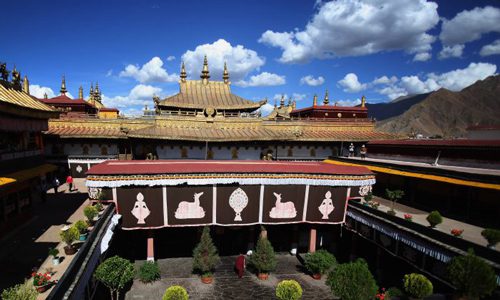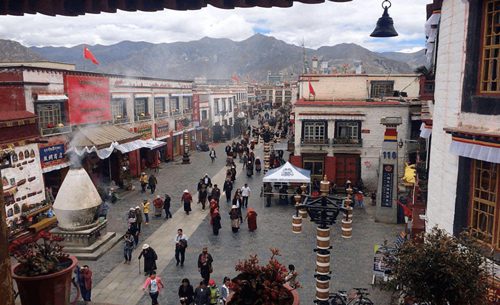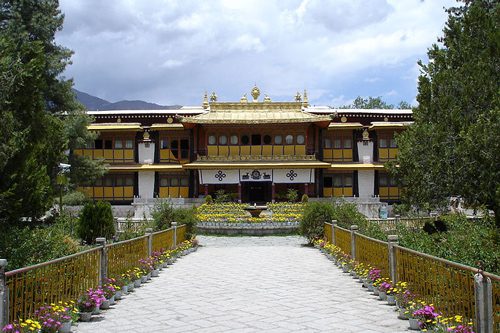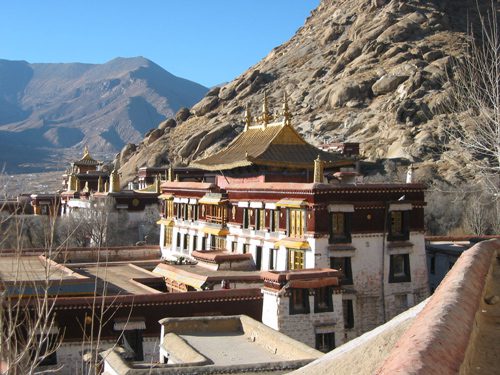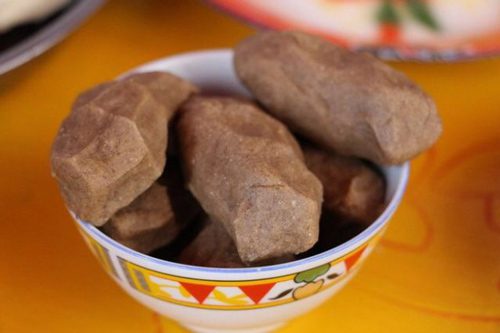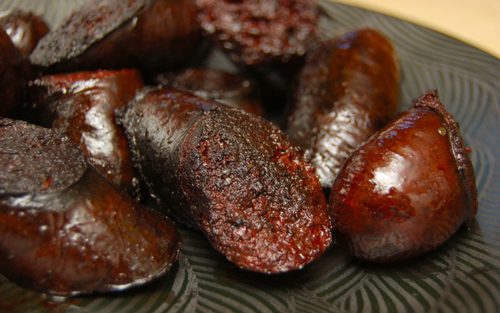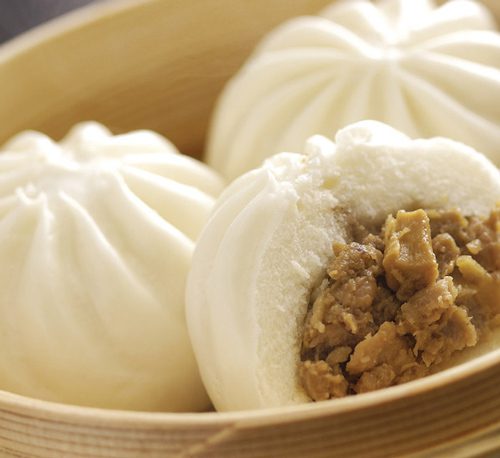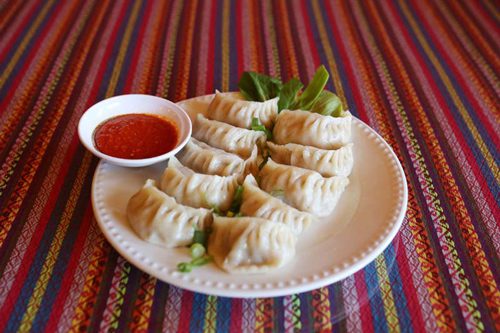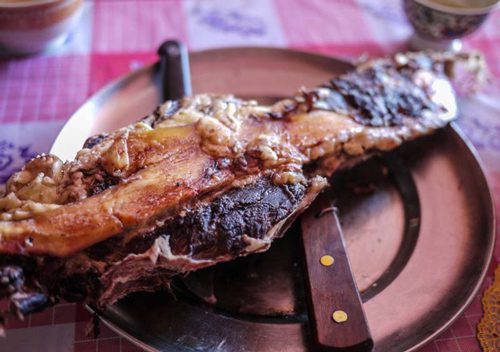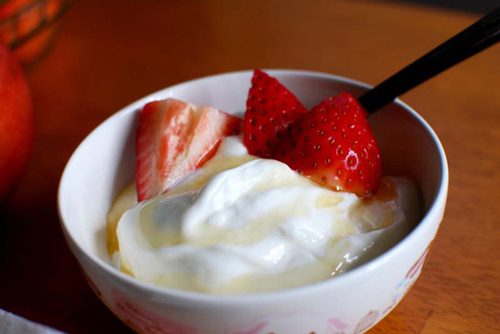Lhasa is the capital of Tibet Autonomous Regions in China. In local language, Lhasa means ‘The Land of the Gods’. This is the home to Dalai Lama and some important Tibetan Buddhist centers such as Potala and Norbulingka Palaces. The population of this city is around 255,000 people, which makes it the second most populous city in Tibet. At the altitude of 3,650 meters, Lhasa is one of the highest cities in the world. Today, Lhasa is an attractive destination for a spiritual and soul retreat tour. With a long history, unique architecture, spectacular sceneries and distinctive culture, Lhasa will be an unforgettable memory in your China trip.
Best Time to Travel to Lhasa
As a high-altitude city, the weather in Lhasa is severe with chilly weather. The average temperate is 9 degrees Celsius. With strong ultraviolet radiation, there is a risk of getting sunburn in Lhasa during the daytime. The temperature will drop significantly at night, even in summers. The best time to travel to this city is from April to October when the weather is less severe.
Lhasa Travel Tips
- It will take around 10 days to get Tibet Entry Permit from the government, so plan your trip in advance for at least 20 days.
- The discrepancy of weather between day and night in Lhasa is significant. Prepare warm clothing along with sunscreen, sunglasses, and hats to prevent you from sunburn.
- Altitude sickness is caused by a lack of oxygen in a high-altitude region. So drink a lot of water and wear warm clothes in your Lhasa trip.
- Dress conservatively, avoid short-sleeved and sleeveless shirts whenever entering a religious site. Respect local customs, don’t take photographs or smoke inside a temple.
- It is not advisable to discuss political and religious topics in Lhasa. You don’t want to get any trouble on your trip.
What to See in Lhasa
1. Jokhang Temple

- Jokhang Temple
Your trip to Tibet will not be complete without visiting Jokhang Temple. Recognized as a UNESCO Heritage site in 2000, Jokhang Temple is now a spiritual center of Tibet. It is a part of Potala Palace’s complex. From the roof of this temple, you can get a panoramic view of Potala Palace. This sacred temple was started building in 652AD during Tang Dynasty. According to the history, this temple was built for Tang Princess Wen Cheng, who is the wife of King Songtsem Gampo, the leader of ancient Tibet. Its architecture is the combination of Indian, Tibetan and Nepalese styles. Jokhang Temple attracts millions of Buddhist pilgrims every year, especially at festivals.
2. Potala Palace

- Potala Palace
Built at an altitude of 3,700 meters, the magnificent architecture is the highest old palace in the world. This palace was originally built by King Songtsem Gampo and restored in 1645 by the 5th Dalai Lama. Potala Palace covers an area of 360,000 square meters and contains 13 stories. In total, the palace contains more than 1000 rooms, 10,000 striking shrines and 200,000 statues. Keep in mind that it is considered disrespectful when taking photos in front of and inside Buddhist temples in Tibet. With its large inward-sloping walls, this palace will look more stunning when being taken photos from afar.
3. Barkhor Street

- Barkhor Street
Located in the center of ancient Lhasa city, Barkhor Street is a famous pilgrimage route circling Jokhang Temple. At this street, you will see flocks of pilgrims from Tibet, Mongolia, Nepal, Bhutan and India walking closewise to head to sacred Buddhist centers of this city. Barkhor Street is the place for you to understand Tibetan culture, religion and how people value Buddhism. It is also a bustling shopping street where you can buy some souvenirs such as wheel prayers, Tibetan traditional clothes, knives, and ornaments. The highlights in Barkhor Street are The Barkhor Street Circumambulation Road, Makye Ame and Canggu Monastery.
4. Norbulingka

- Norbulingka
Norbulingka means ‘Jeweled Garden’ in English and is the largest man-made garden in Tibetan region with an area of 360,000 square meters. It was constructed in the 1740s by the 7th Dalai Lama. The buildings are all made of wood and stones with Tibetan style. Norbulingka is divided into three parts: the eastern side in front of the palace containing entrance and front park of Tsokyil Phodrang; the core part is the palace and the western side is the Golden Lingka. With around 100 species of plants, this garden is covered with fresh air and pleasant atmosphere. Summer and autumn are the times to organize festivals, singing, dancing and musical instrument performance in Norbulingka.
5. Sera Monastery

- Sera Monastery
5 kilometers from Jokhang Temple, Sera Monastery is one of three main monasteries in Lhasa besides Drepung Monastery and Ganden Monastery. The highlight in Sera Monastery is watching the monks’ debating sessions every day at 3 pm (except Sunday). It is an opportunity for you to understand Buddhist rituals, sutras and scriptures. The Great Assembly Hall is the must-see attraction in Sera Monastery and the largest palace here.
What to Eat in Lhasa?
This alpine city is not only attractive for spectacular nature but also delicious local cuisines. Since there is a scarce of vegetables and fruits in Lhasa, people often use wheat and meats such as yak, goat and mutton in their meals. Due to severe climate, the meals are higher in fat and calories than other regions. The cuisines are influenced by Indian and Nepalese cultures but still keep their traditional cooking techniques and flavor. Moreover, cheese, noodles and dairy products made from cattle here are also notable.
1. Tsampa

- Tsampa
Tsampa is the local specialty of Lhasa. This food is basically barley flour and served with local butter tea. Butter tea and tsampa will be put in a bowl and then knead all the mixture and enjoy the dish. This food is usually used for New Year celebration in Tibetan regions. Tsampa will be thrown into the air in the New Year’s festivals to pray for peace and show respect to the Buddha who protects local life. Due to chilly weather in the mountainous area, local people eat this dish many times a day to gain sufficient protein and carbohydrate for their daily activities.
2. Gyurma (Blood sausage)

- Blood sausage
Sausage is the popular food in China that was invested around 1000 years ago. Basically, different fillings such as meat or blood are put into the intestines. Gyurma is a kind of blood sausage made from yak, cow or sheep’s blood. After filling process, it is boiled for several hours until it turns into grayish white. This food is usually cut into thin slices. Gyurma tastes fresh and is suitable to eat in winter.
3. Tibetan Meat Baozi (Meat Bun)

- Tibetan meat bun
Tibetan Meat Baozi is a kind of steamed bun which is meatier than other Chinese traditional buns. Firstly, the raw buns are prepared, then, minced mutton or beef with rice wine and seasonings are put into the bun. Secondly, the buns are steamed for 10 to 20 minutes.
4. Tibetan momo

- Tibetan Momo
Tibetan momo is a type of local dumpling which is originally from Tibet. There are many kinds of meat can be used for fillings, for example, pork, chicken, lamb, yak and mutton. Chopped vegetables such as cabbage, onion, garlic and mushroom are added as well. The dumpling will be steamed or fried and served with a special sauce. Although the dumpling is small in size, it has a really juicy and succulent taste.
5. Tibetan yak meat

- Tibetan Yak Meat
Yaks are the popular livestock and are easily found in Lhasa. A male yak weighs around 300 to 600 kilograms, which provides a sufficient amount of meat. This is a nutritious and tasty kind of meat which is cooked in many methods: frying, roasting or braising. Yak meat contains a high level of protein and calorie.
6. Tibetan Yogurt

- Tibetan Yogurt
Don’t forget to take Tibetan Yogurt for your dessert. This kind of yogurt is made from yaks’ milk, which is much creamier than cow milk. Enjoy it with some sugar, raisins or strawberries.
Most famous restaurants in Lhasa
- Dunniya Xicanting: 100 Beijing East Road, Chengguan District
- Lasa Xueyu Canting: Floor 2, 8 Tibetan Hospital Road, Chengguan District
- Lasa Namasede Canting: Floor 2, Pearl Peak Greatness Mall, 30 Yutuo Road, Chengguan District
- Tibetan Family Kitchen:1 Danjielin Road (opposite the Shangbala Palace), Chengguan District
- House of Shambhala Restaurant:7 Jirier Lane, Chengguan District
- Dunya Restaurant: 100 Beijing East Road, Chengguan District
- Tash 1 Restaurant: Zangyiyuan Road, Lhasa

